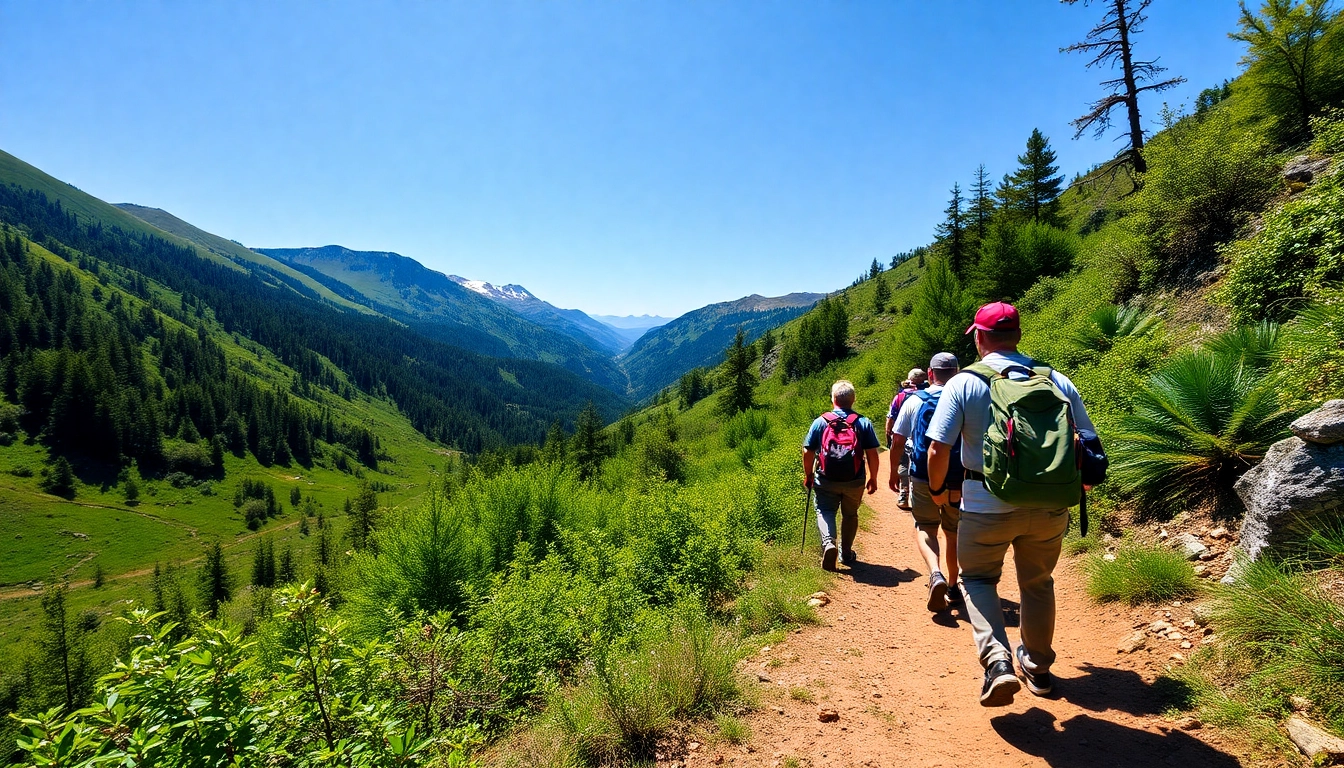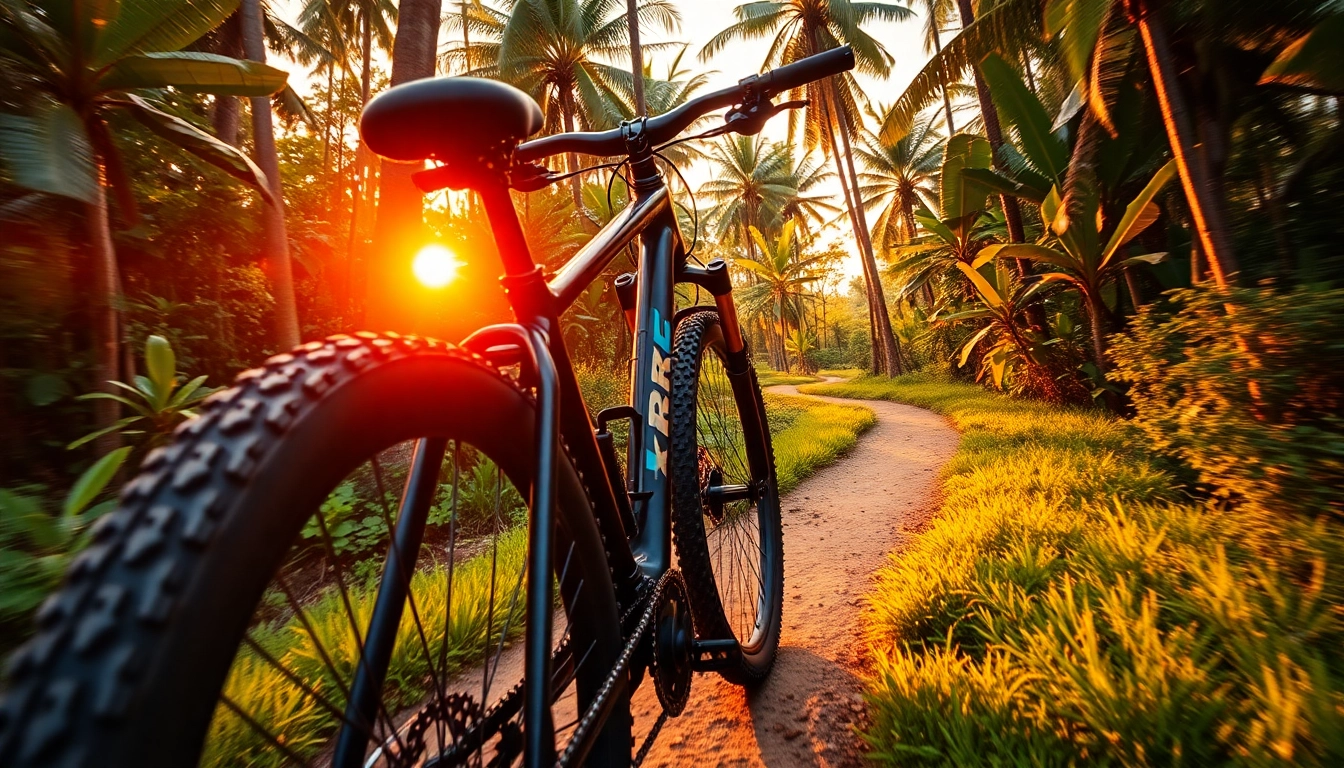Introduction to Guided Hikes: Why They Enhance Your Outdoor Experience
Embarking on a hike is more than just walking through scenic landscapes—it’s an immersive experience that combines physical activity, appreciation of nature, and cultural discovery. For those seeking a safer, more informative, and enriching adventure, guided hikes offer an invaluable solution. Whether you’re an experienced trekker or a beginner exploring new terrains, understanding what a guided hike entails can transform your outdoor journey. A guided hike involves being led by an expert individual who navigates the trail, shares local insights, and ensures safety at every step. This approach not only minimizes risks but also deepens appreciation of the environment and local cultures.
Globally, guided hikes have gained popularity among travelers and outdoor enthusiasts due to their multitude of benefits. In this comprehensive guide, we will delve into why guided hikes significantly enhance your adventure, explore planning tips for Indonesia’s unique landscapes, highlight top destinations, and provide practical advice to maximize your experience. With the right guidance and preparation, your next outdoor adventure in Indonesia can be transformative and unforgettable.
Understanding What a Guided Hike Entails
Defining Guided Hiking Tours
A guided hiking tour is a structured outdoor activity where an experienced guide leads a group along a predetermined trail. These guides are often local experts with extensive knowledge of the terrain, history, flora, fauna, and cultural significance of the area. Unlike independent trekking, guided hikes provide a curated experience that balances adventure with education and safety. The guide’s role extends beyond navigation—they serve as educators, safety coordinators, and local ambassadors.
In Indonesia, guided hikes can vary from short jungle walks around Bali to multi-day volcanic treks in Lombok or comprehensive explorations of Komodo Island’s ecosystems. Guided hikes can be tailored to different fitness levels, interests, and time constraints, making them accessible and appealing for a broad audience.
For a seamless experience, many organizations offer all-inclusive packages that include not only guiding services but also transportation, meals, and accommodations. Such arrangements ensure a hassle-free adventure, allowing you to focus solely on enjoying the environment.
The Advantages of Having an Expert Guide
Enhanced Safety and Risk Management
One of the primary benefits of a guided hike is safety. Guides are trained in first aid, wilderness survival, and emergency response protocols. Indonesia’s diverse terrains—ranging from volcanic slopes to dense rainforests—pose inherent risks that seasoned guides are equipped to handle. They evaluate weather conditions, terrain difficulty, and group capabilities to minimize hazards. This expert supervision helps prevent accidents and ensures prompt action if emergencies arise.
Deepening Knowledge and Cultural Insight
Guides are often locals who possess invaluable insights into the cultural, historical, and ecological aspects of the region. During hikes in Indonesia, guides can elucidate traditional stories, explain ecological significance, and identify native plants or wildlife—adding a layer of education and connection that self-guided tours might lack. This enriches the overall experience and fosters a greater appreciation for the destination’s heritage.
Personalized Experience & Flexibility
Professional guides tailor their approach to suit your interests and physical capabilities. Whether you desire a challenging summit or a leisurely nature walk, guides adjust pacing, highlight key features, and accommodate special requests. They also facilitate smaller group sizes, enhancing interaction and comfort.
Efficiency and Navigation
Guides are experts in trail navigation, which is especially crucial in remote or less-marked areas. They eliminate the stress of route-finding, allowing you to focus on the scenery and camaraderie. In regions like Lombok or Komodo, where trails may be less maintained or poorly marked, having an expert leader is invaluable.
Environmental and Cultural Respect
Guides advocate for responsible tourism, emphasizing the importance of minimizing ecological impact and respecting local communities. They educate hikers on Leave No Trace principles and cultural sensitivities, helping preserve Indonesia’s natural beauty and cultural heritage for future visitors.
Common Misconceptions About Guided Hiking Tours
Guided Hikes are Only for Beginners
While guided hikes are ideal for novices, they also appeal to seasoned hikers seeking expert insights, safety reassurance, or access to challenging terrains. Guides can support all fitness levels and tailor routes accordingly, dispelling the myth that guided tours are only for amateurs.
Guided Hikes Limit Freedom and Spontaneity
Contrary to this misconception, professional guides often encourage engagement, questions, and spontaneous exploration within the trail. Well-organized guided hikes allow for flexibility, personalized experiences, and opportunities to linger at points of interest.
Guided Tours Are Expensive and Unnecessary
Investing in a guided hike can be cost-effective when considering safety, expertise, convenience, and the enriching experience. The long-term value—memories, knowledge, and safety—far outweighs the expense, especially in remote or ecologically sensitive areas.
Guided Hikes Are Commercial and Lack Authenticity
Authentic guided hikes often involve local guides who share genuine cultural narratives and ecological knowledge. Supporting these tours encourages sustainable tourism and benefits local communities, fostering authentic cultural exchange.
Planning Your Guided Hike in Indonesia: Key Considerations
Selecting the Right Trail and Difficulty Level
Indonesia offers a diverse array of hiking options, from the lush rainforests of Bali to the volcanic landscapes of Lombok and the unique ecosystems of Komodo Island. When choosing a trail, consider your fitness level, experience, and the kind of adventure you seek. Trails are rated in difficulty—easy, intermediate, challenging, etc.—and understanding these distinctions helps set realistic expectations and prepares you accordingly.
For beginners, exploring Bali’s rice terraces or jungle walks offers manageable introductions to Indonesian landscapes. Advanced hikers might opt for the challenging ascent of Mount Rinjani in Lombok or multi-day treks on Komodo Island, renowned for their rugged terrains and stunning vistas.
Preparing for Weather and Terrain Challenges
Indonesia’s tropical climate varies seasonally, impacting trail conditions. The dry season (May to September) provides more stable weather, ideal for hiking, while the rainy season (October to April) can render trails muddy and treacherous. Guides typically monitor weather forecasts to adapt itineraries, but travelers should also prepare by packing appropriate gear—waterproof clothing, sturdy boots, sun protection, etc.
Terrain varies from volcanic slopes to lowland forests, so proper footwear and physical conditioning are critical. In volcanic regions, additional precautions are necessary due to unstable ground and potential volcanic activity alerts.
Understanding Local Guide Standards and Certifications
When selecting a guided hike, ensure that guides are certified and adhere to local tourism standards. In Indonesia, reputable operators employ guides trained in safety procedures, environmental protection, and cultural sensitivity. Certifications from local tourism authorities or international organizations provide assurance of professional competence.
Ask about the guide’s experience with specific trails, language proficiency, and emergency response skills. Transparency in guide qualifications ensures a safe and informative journey.
Top Destinations for Guided Hikes in Indonesia
Bali’s Scenic Mountain and Jungle Trails
Bali, renowned for its vibrant culture and natural beauty, offers a variety of guided hikes suitable for all skill levels. Climbing Mount Batur, an active volcano, provides breathtaking sunrise vistas, while jungle treks in areas like the Munduk region allow hikers to experience waterfalls, lush forests, and traditional villages. Local guides share insights into Balinese mythology, farming practices, and ecology, enriching every step.
Guided Hikes Around Lombok’s Volcanic Landscapes
Lombok’s crown jewel is Mount Rinjani, Indonesia’s second-highest volcano. Guided multi-day treks here involve navigating volcanic craters, hot springs, and crater lakes. Rinjani guides are expert mountaineers with knowledge of volcanic activity, ensuring safety and ecological preservation. The trek offers sweeping views, unique flora and fauna, and an authentic experience of Indonesia’s volcanic wilderness.
Exploring Komodo Island’s Unique Ecosystems with Expert Guides
The Komodo National Park is a UNESCO World Heritage Site famous for its endemic Komodo dragons, vibrant coral reefs, and diverse marine life. Guided hikes on nearby islands or within the park enable visitors to observe wildlife, learn about conservation efforts, and explore pristine ecosystems. Guides are trained in biodiversity monitoring and cultural storytelling, providing an educational journey wrapped in adventure.
What to Expect During a Guided Hike Experience
Itinerary Planning and Safety Briefings
Before setting out, guides conduct thorough safety briefings covering trail difficulty, itinerary details, emergency procedures, and environment-specific precautions. They outline daily schedules, expected challenges, and points of interest, ensuring everyone is informed and prepared. This planning phase is crucial in remote areas, where conditions can change rapidly.
Learning About Local Flora, Fauna, and Culture
Guides serve as natural and cultural educators. As you traverse Indonesia’s varied landscapes, they point out endemic plants, bird species, and wildlife behaviors. Culturally, guides share stories of local traditions, historical sites, and indigenous practices. This educational component transforms a hike into a meaningful exploration of Indonesia’s rich heritage.
Supported Hiking: Gear, Meals, and Accommodations
Most guided tours include logistical support—quality gear, nutritious meals (especially during multi-day treks), and comfortable accommodations. Guides coordinate transportation, arrange camping equipment if necessary, and ensure hydration and nutrition needs are met. These services allow hikers to focus solely on enjoying the trek without logistical worries.
Maximizing Your Guided Hiking Adventure: Tips & Best Practices
Engaging Actively with Your Guide for Insights
Ask questions, share your interests, and participate in discussions. Whether you’re curious about local history, ecological facts, or trekking techniques, active engagement deepens your understanding and connection to the environment. Experienced guides appreciate curious hikers and often tailor their storytelling accordingly.
Respecting Nature and Local Communities
Practicing Leave No Trace principles is essential. Avoid littering, stay on designated trails, and respect wildlife and vegetation. When passing through local villages or cultural sites, follow local customs, seek permission before photography, and support local artisans and businesses.
Post-Hike Reflection and Sharing Your Experience
After completing your hike, share your feedback with your guide and tour operator. Reflect on what you’ve learned and experienced, and consider contributing photos or stories to promote responsible tourism. This not only enhances your personal growth but also supports sustainable practices in the region.


